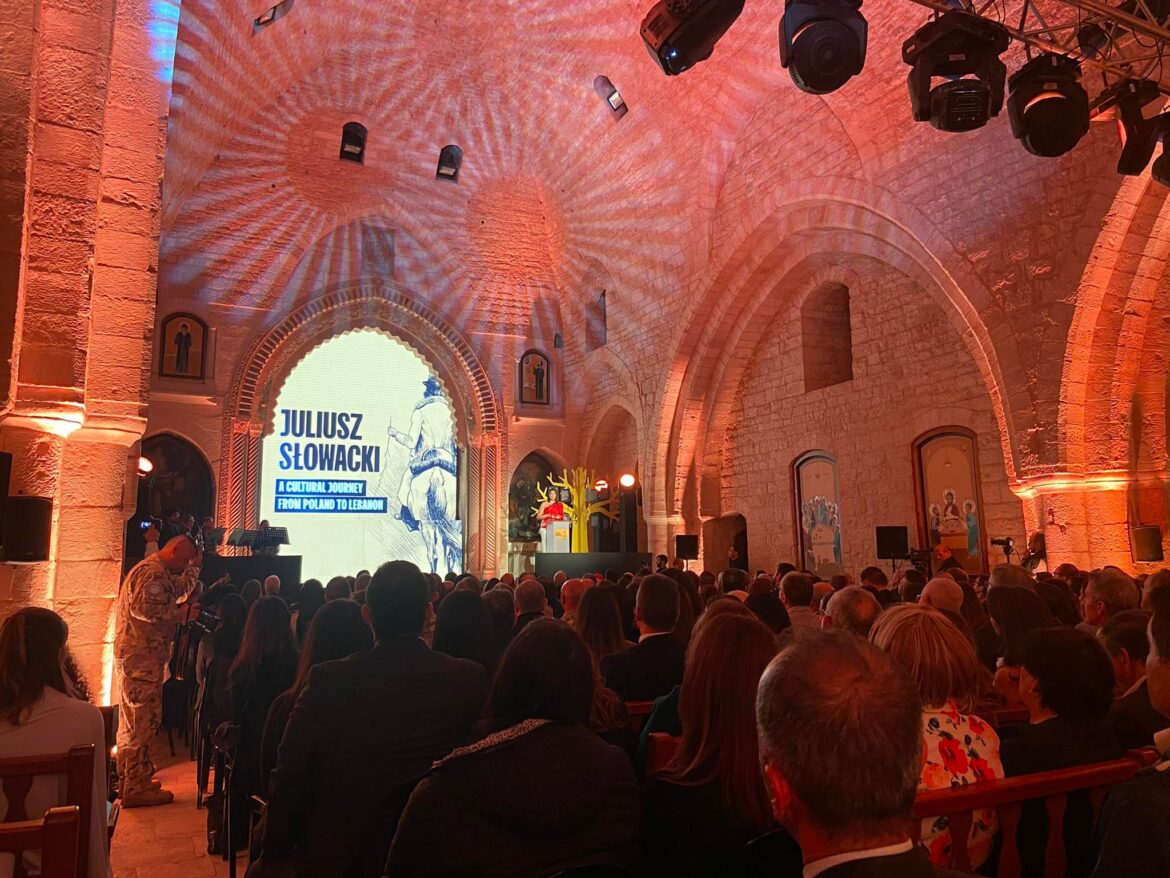Deputy Prime Minister, Minister of Culture and National Heritage Prof. Piotr Gliński, in a letter addressed to the participants of the opening ceremony of the exhibition ‘Słowacki in Lebanon’, wrote: “I would like to express my sincerest gratitude to all those who contributed to the creation of the exhibition commemorating the stay in Lebanon of one of the most important Polish poets of the Romantic era – Juliusz Słowacki”.
Opened on 7 November at the St Anthony’s Monastery in Ghazir, Lebanon, the exhibition is prepared by the Adam Mickiewicz Museum of Literature with funding from the Ministry of Culture and National Heritage and tells the story of Juliusz Słowacki’s inner journey and spiritual transformation during his time in the monastery, which resulted in writing the manuscript of his poem ‘Anhelli’.
This is the second installment of the exhibition realised as part of the Year of Polish Romanticism, presented at the Museum of Literature in Warsaw from 10 June to 18 September 2022.
The second ‘Słowacki in Lebanon’ exhibition represents the poet’s symbolic return to Ghazir. A plaque embedded in the stone wall of St Anthony’s Monastery in Ghazir (known as Betcheshban) near Beirut (where the exhibition is presented) states: “In this monastery Juliusz Słowacki stayed in 1837 and wrote Anhelli”.
During his more than month-long stay in Lebanon (from 20 February to around 1 April), Juliusz Słowacki spent time with the monks and learned Arabic. This is where the first version of the poem ‘Anhelli’ was written, and one of the work’s characters, the angel Eloe, was created on the basis of legends heard from the monks. His sketches with the manuscripts of the works, filled the pages of two of Słowacki’s notebooks: ‘Album of Drawings from a Journey to the East’ and ‘Raptularz Wschodni’ (Eastern Sketches).
Adrian Andrzejewski





